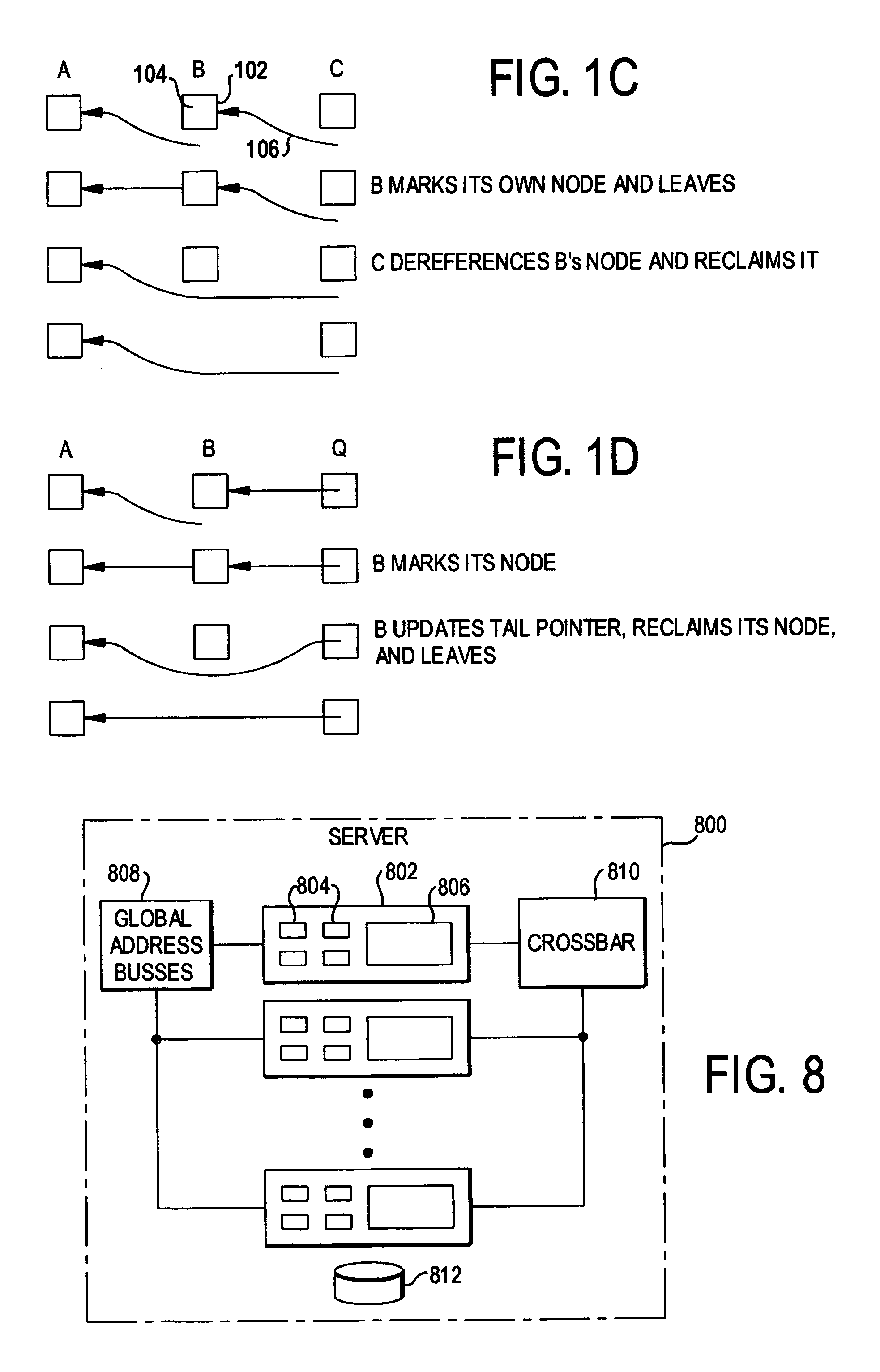Queue-based spin lock with timeout
a timeout and spin lock technology, applied in the field of spin locks, can solve the problems of inability to guarantee that space will be reclaimed in bounded time in multi-programmed systems, timeout may be indefinitely delayed on a multi-programmed system, and space may not be reclaimed
- Summary
- Abstract
- Description
- Claims
- Application Information
AI Technical Summary
Benefits of technology
Problems solved by technology
Method used
Image
Examples
Embodiment Construction
[0046]Two preferred embodiments of the invention will now be set forth in detail with reference to the drawings. Two variants of each embodiment are described: one with guaranteed linear space but blocking timeout, the other with non-blocking timeout but theoretically unbounded space.
[0047]The first preferred embodiment (variant with blocking timeout) is called the CLH try lock. It is based on the earlier CLH lock of Craig (“Building FIFO and priority-queueing spin locks from atomic swap,” Technical Report TR 93-02-02, Department of Computer Science, University of Washington, February, 1993) and of Landin and Hagersten (“Queue locks on cache coherent microprocessors,” 8th Intl. Parallel Processing Symposium, Cancun, Mexico, April, 1994, pp. 165–171).
[0048]In the standard CLH lock, a thread leaves its queue node behind when releasing the lock. In its place, it takes the node abandoned by its predecessor. For a try lock, one would like to arrange for a thread that times out to leave w...
PUM
 Login to View More
Login to View More Abstract
Description
Claims
Application Information
 Login to View More
Login to View More - R&D
- Intellectual Property
- Life Sciences
- Materials
- Tech Scout
- Unparalleled Data Quality
- Higher Quality Content
- 60% Fewer Hallucinations
Browse by: Latest US Patents, China's latest patents, Technical Efficacy Thesaurus, Application Domain, Technology Topic, Popular Technical Reports.
© 2025 PatSnap. All rights reserved.Legal|Privacy policy|Modern Slavery Act Transparency Statement|Sitemap|About US| Contact US: help@patsnap.com



